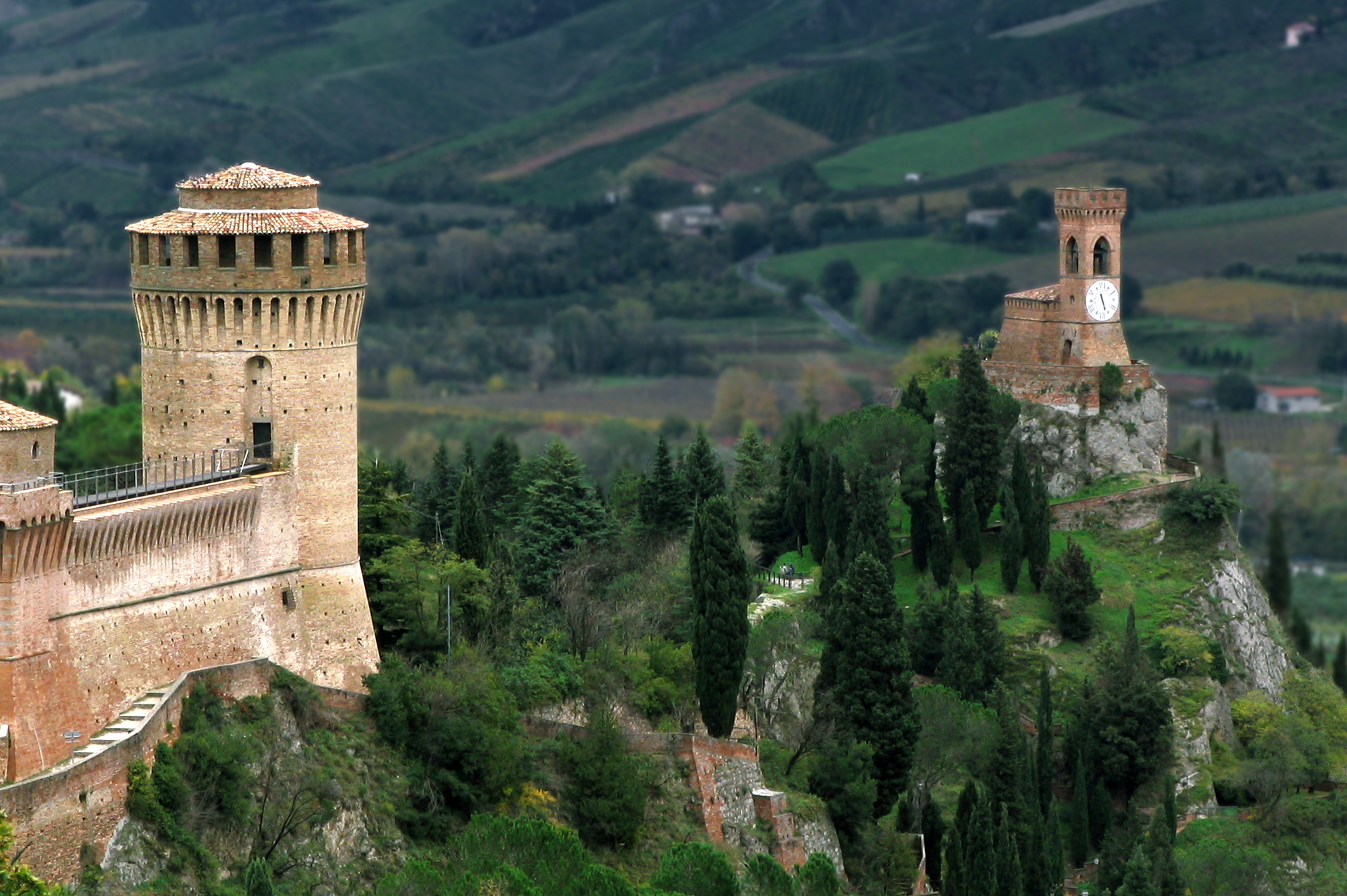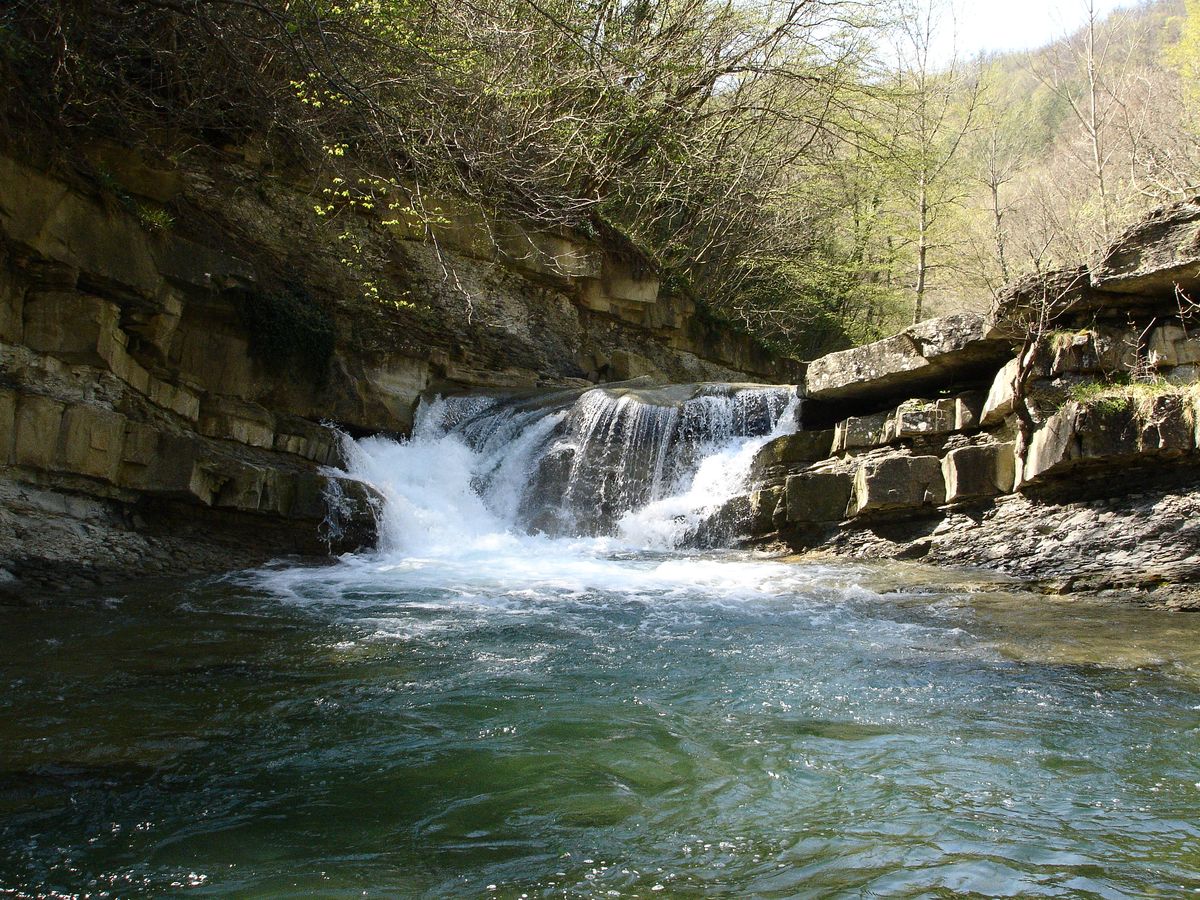
In autumn, Romagna is the gift that keeps on giving. Whilst the sea and beaches offer landscapes and emotions that speak of solitude and Fellini-inspired nuances, the plains, hills and mountains of Romagna fill with almost unimaginable colours, flavours and fragrances.
The cities and ancient hamlets are perhaps more alive, exciting and welcoming than ever: a deep and sincere identity made up of history, art and culture is best expressed in the fetes, in the squares, within castle walls, in museums and in centuries-old churches and abbeys. The jewel of the Po Delta, a unique heritage in Italy, offers all-encompassing atmospheres thanks to its beauty and almost impenetrable nature. It is in autumn that the cultivated fields and the wildest hills of Romagna offer the greatest riches. It is a triumph of the land, of the hard work that makes it beautiful and of the know-how that makes it abound in delicious produce. Autumn is the magical moment of the grapes and great wines of Romagna, of the “wine and food roads” with itineraries along which visitors can fully appreciate local agricultural and food and wine production, discover wine cellars, olive groves and mills producing premium Romagna oils, cheese-factories and flour mills.
It is the season for collecting rare white truffles, mushrooms and chestnuts, unmistakeable products and flavours that lead us towards the Apennines. In the mountains of Romagna, the great table of flavours is accompanied by an astonishing palette of colours. Autumn becomes a spectacle of nature, a spectacle that opens with the outstanding scenes of magnificent foliage, where the stars are the nature reserves: Casentino Forests, Mount Falterona and Campigna National Park, with its mountains and woods on the border between Romagna and Tuscany, Sasso Simone and SimoncelloInter-Regional Park, which borders with the Marche as well as Tuscany, and the entire network of parks in Romagna with Frattona Wood, Onferno Nature Reserve and Caves, Vena del Gesso Romagnola and Scardavilla Wood. Autumn brings the discovery that every part of Romagna is beautiful to walk or cycle around, along stretches that today form a network of well-organised and signposted paths and minor roads. There are lots of opportunities offered by trails that wind their way through the valleys of Romagna, there are lots of journeys through space and time offered by walks in Romagna and ancient “historical roads” following in the footsteps of great figures, great saints or the Supreme Poet, Dante Alighieri, or in the always emotional footsteps of those who lived simply for millennia in the most isolated and secluded hills and mountains.
Even visiting a village is an experience that transports travellers to a place full of identity, ancient skills and conviviality, where time seems to pass more slowly than elsewhere. In a village, everything is close at hand, from art, to history, to the possibility to chat with its inhabitants.
In terms of villages, the region of Romagna has a lot to offer. From the hills to the sea, its territory is dotted with small towns with ancient traditions, a heritage of expertise and know-how waiting to be revealed. Where shall we begin?
An ideal starting point is to check out the list of the most beautiful villages in Italy, created by the Borghi più belli d’Italia Association, which lists “borghi” [villages] that have been selected for their great artistic, cultural and historical heritage. There are 9 of these certified villages in Romagna, each with its own specific identity, but all of which are united for their beauty and charm. The first village we encounter is Montegridolfo, on the border with the Marche region, a small town surrounded by olive trees, grape vines and laurel trees, the ideal place to escape from your everyday routine.
This area was once the domain of the castles of the Malatesta and Montefeltro Lords, which includes 4 other villages certified by the Borghi più belli d’Italia Association: Montefiore Conca, with its square fortress dominating the hills; San Giovanni in Marignano, the “granary of the Malatestas”; San Leo, with its impressive fortress overlooking the Valmarecchia valley; and Verucchio, cradle of the Etruscan Villanovan culture. The northernmost village of Romagna is Brisighella, often remembered for its picturesque, medieval Via degli Asini, and home of Brisighella PDO Extra Virgin Olive Oil.
The list is completed by Bagnara di Romagna whose emblem is undoubtedly the Rocca Sforzesca which offers atmospheres of distant eras, Bagno di Romagna, a small and suggestive town made up of medieval alleys, towers, small squares, palaces designed by the long Florentine domination, and Bertinoro, the “Balcony of Romagna”, a typical example of a medieval citadel with walls, towers and old houses, also known as the “City of Wine”.
Another way of exploring the villages of Romagna is to visit “borghi” that have received Touring Club Italiano’s Orange Flag Award, awarded to small towns that are distinguished by the quality of the hospitality they offer. Villages from this network include Brisighella in the province of Ravenna; Bagno di Romagna, Castrocaro Terme e Terra del Sole, Longiano, Monteleone, Portico di Romagna, San Benedetto in Alpe, Sarsina and Premilcuore in the province of Forlì-Cesena; and, finally, Montefiore Conca, San Leo, Sant'Agata Feltria, Verucchio and Pennabilli in the province of Rimini.
Another very interesting itinerary is to take a tour of the Authentic Villages of Emilia-Romagna, a group of small towns that aim towards sustainable local development and the enhancement of their own local identity. There are 6 such villages in Emilia-Romagna: In Romagna are Modigliana near the border with Tuscany and the Union of Municipalities of Romagna Forlivese, consisting of 15 villages.
We end this overview of the villages of Romagna by moving towards the Riviera. Here we encounter the seaside villages, a group of fascinating small towns that are dotted one after the other along the Adriatic coast, which are full of traditions related to fishing and sailing.
